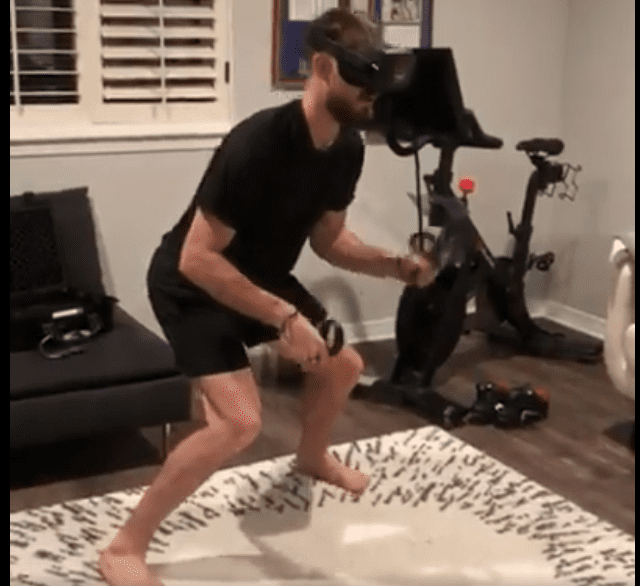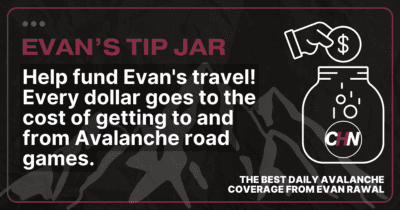Colorado Avalanche
The Virtual Reality Tool That Helped Philipp Grubauer Have a Vezina-Worthy Season

Philipp Grubauer does not need to be on a sheet of ice anymore to stop pucks. He can be in a hotel room. He can be in his living room. He can be on his patio, or maybe a corner of a Starbucks store on a slow day or, really, any place in the world where there’s a few feet of open space.
Grubauer does not need to be at the whim of a real-life person shooting pucks at him anymore. He can dictate how pucks come at him now, at what speeds, from what angles, with as many obstacles in front of him as he chooses. He can do this at any time of day, any day he wants, for as long as he wants. He also can get a real-time, digital readout of his movements, his success rate at stopping pucks and he can click a link to replay it all, to watch for himself.
Welcome to the new world order for hockey goalies. Welcome to the world of Sense Arena, the Oculus Quest 2 virtual reality cloud-based system that Grubauer and a growing number of goalies at all levels are using to better their skills. Think of it as being the participant in your own real-life hockey video game, where you’re actually grabbing virtual pucks out of midair with your real hands, and taking real-life-looking shots from shooters that, well, aren’t actually real but sure seem like it.
As part of his travel bag on road trips now, and anywhere else he wants to go, Grubauer packs his Oculus Quest 2 helmet and simulates any number of situations to work on his technique. He started using the Sense Arena system late last year, and went on to have the best season of his NHL career for the Avalanche, finishing the regular season with a 1.95 goals-against average. He could be a leading candidate for the Vezina Trophy as the best goalie of the NHL season.
“You just put the glasses on and it simulates you being in the rink, being in the net,” Grubauer said. “You can pick the drills. You can pick screens, you can pick deflections. You can see your gloves and your blocker and you can track the puck. It’s great training for at home, when you don’t have access to ice. It’s a really good device to stay sharp, and on game day too, to warm up your eyes. You can warm up your legs and your upper body too, but I think guys always forget about hand-eye coordination too.”
Sense Arena, founded in 2017 by Bob Tetiva, was recently named by the New Jersey Devils and Arizona Coyotes as their official cognitive training tool. The company has many NHL goalies who use the system, including Grubauer, Keith Kincaid, MacKenzie Blackwood, David Rittich, Elvis Merzlikins and fellow Avs goalie Pavel Francouz, among others. The system ranges in cost up to about $1100, plus a monthly licensing fee of a little under $100 on average. There is a system for regular skaters as well, but it has been with goalies where the platform has really taken off.
“We are regularly working on updates for the current versions, adding training plans from different professionals and pretty much perfecting what we have now,” said Vojta Rousar, a marketing manager with Sense Arena. “Then we have another huge feature coming up hopefully this fall which is not official yet so I wouldn’t like to include any details on this just yet.”
Here’s a little of what it’s like for a goalie using the Sense Arena system:












